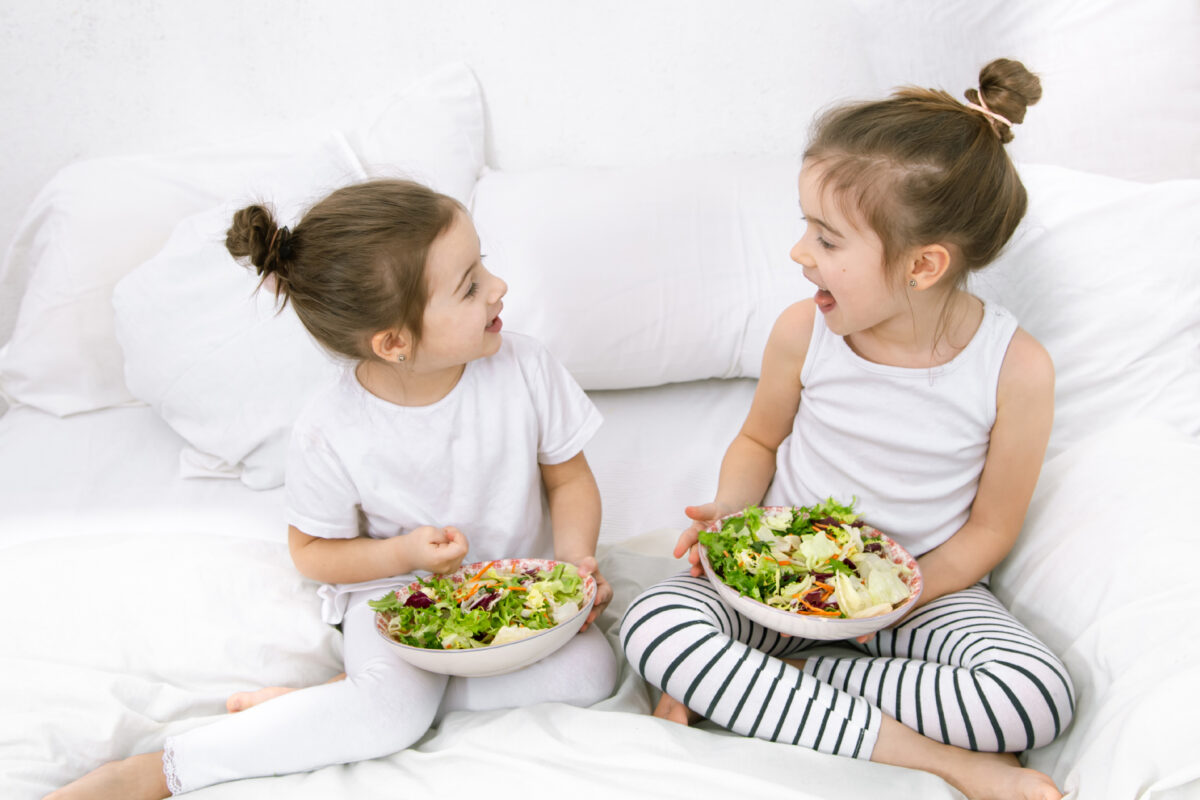What are the initial eating habits in young children?

Introducing solid foods into a child’s diet is a crucial stage in their nutritional development. Young children learn what different foods are beyond milk. The introduction of solid foods should be gradual and tailored to the child’s individual needs. The Institute of Mother and Child recommends introducing solid foods after the completion of the 17th week of a child’s life.
I encourage all parents of children at the stage of introducing first foods to lower their expectations, as it’s unlikely that children will ask for seconds with the first spoonful of cooked broccoli. It’s essential to remember that, with the first foods, children will learn that they can be satisfied with a bowl or plate of food. Signs indicating readiness for a meal include gazing at the bowl, reaching forward with hands, overall body movement, smiles, and opening the mouth at the sight of a spoon. On the other hand, signs of fullness may include turning the head away from the spoon, avoiding by leaning back, loss of interest in food, or drowsiness. The ability to interpret these signals is crucial for carers to avoid overfeeding infants and for children to learn self-regulation.
Food other than milk comes in various colours, has distinct smells, can be touched, and maybe warm or cold. So many new stimuli for a child at once. The change often extends to the eating environment – the child gets their own chair, plate, and cup.
From the first days of introducing solid foods, let’s also focus on teaching water consumption by offering spring water, natural low-mineralized, and low-sodium water as the first choices. In the following years, water with a higher mineral content can be introduced. After the first year of life, when expanding the diet has progressed well, children can have regular meals based on the family table’s diet, with the caveat that our prepared meals do not contain excessive salt, preservatives, or highly processed ingredients.
When composing regular meals, it is essential to pay attention to the adequate amount of iron in the diet (iron RDA 10 mg) by incorporating high-quality products from the following groups:
Meat, Fish, Eggs, Poultry – Fish and eggs are allergens, so we introduce them with careful observation of the little ones. Example:
- 1 egg weighing 50g provides 70 kcal of energy, including 13mg of iron.
- 1 serving of steamed salmon (35g) contains 75 kcal, including 4mg of iron.
Seeds and Nuts – These are allergens, so we introduce them with careful observation of the little ones. They can be added in ground form, for example, to pancakes. Example:
- 5g/teaspoon of ground sunflower seeds provide 30 kcal of energy, including 3mg of iron.
Whole Grain Products – Grains containing gluten, which is an allergen, include barley, wheat, rye, oats, spelt, and triticale. Example:
- A 30g portion of buckwheat for lunch provides 35 kcal of energy and 3.5mg of iron.
An additional advantage of these food groups is their high nutritional density, meaning that, according to the World Health Organization (WHO) recommendations, the energy value of 100g contains at least 70 kcal (equivalent to mother’s or formula milk).
Iron, to enhance its absorption, requires good sources of vitamin C. Therefore, it is worthwhile to offer children vegetables and fruits as part of meals or, if suitable for the dish, add lime or citrus juice.
What are the initial dietary habits that a child learns during the introduction of solids and in the subsequent years?
- I eat regular meals, including various vegetables and fruits.
- Colourful vegetables and fruits have different important tasks. I patiently learn to eat them.
- I eat both wheat and whole-grain bread occasionally – learning and getting to know various grain products.
- I drink water between meals.
- During dinner, I taste various products that help me grow – dishes with fish, dishes with eggs, and dishes with colourful asparagus beans.
Developing a positive attitude towards food from an early age can contribute to shaping good eating habits for a lifetime. It is also crucial to approach children’s nutrition consciously, taking into account their individual preferences, needs, and stages of development.
Acquiring good eating habits is not a one-time event but a fascinating journey. Patience, perseverance, and support are key in this process, allowing children to develop healthy eating habits for years to come. This idea guides us at KIDS&Co. Hence, our nutritional project is called “GOOD FOOD by KIDS&Co.”
We aim for eating to be a source of joy for children, not a cause of stress. We will strive to ensure that every child in our preschool receives nutritious meals that support healthy development and contribute to their emotional well-being.
Let’s meet!
We invite all of you to an individual meeting with the headteacher. This will be a great opportunity to find out about our educational offer, ask questions, and visit the kindergarten. You can book one visit for a given day.












